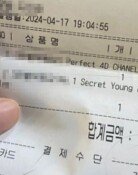Four lessons New York learned from COVID-19 crisis
Four lessons New York learned from COVID-19 crisis
Posted July. 11, 2020 08:05,
Updated July. 11, 2020 08:07

New York City, which suffered heaviest damage from COVID-19 in the U.S., is starting to recover from the crisis. Restaurants have resumed operation outdoors, and department stores reopened. Despite the growing concern over a “second wave,” with the number of confirmed COVID-19 patients exceeding 3 million across the nation, the situation in New York is quite stable in recent days. The number of COVID-19 patients who are relying on ventilators amounted to only 97 as of Tuesday. It is the first time since the number of people using ventilator has dropped to below 100 on March 16.
New York has learned valuable lessons after suffering hopelessly from the COVID-19 pandemic. Firstly, the virus did not respect race, but the scope of spread significantly varied by area. According to CityMD, a medical emergency facility in New York, the antibody formation rate of people for COVID-19 amounted to 68.4 percent in Queens, an area with a large working class population. It means that seven out of 10 people who tested positive for Covid-19 and developed antibody. Since the antibody survey was conducted among many people who visited medical facilities due to suspected symptoms, experts say the rate could be higher than the actual antibody formation rate of residents in the city. However, 60 percent of the population have COVID-19 antibodies, which infectious diseases experts call “magic number” for herd immunity.
Secondly, the city learned that since coronavirus spread differs by area and income levels, it needs customized countermeasures in preparation for a second wave. The infection rate was higher in areas where a larger portion of the population are engaged in essential businesses, such as cafeterias, grocery stores, medical facilities and construction sites who have to go to work despite the COVID-19 crisis. In some cases, those working in essential businesses were infected outside, and returned home where multiple families live together, to become a “super-spreader” at home. Experts say that measures should be made to protect workers engaged in essential businesses and expand medical infrastructure in vulnerable areas in order to prepare for a second crisis.
Thirdly, safe areas that were rather successful in controlling the disease in the first crisis are not free from a second crisis. It should be verified how long antibody can be sustained and how effective herd immunity will be, but experts say the areas with a fewer number of infected cases in the first crisis have the potential to see exploding cases if and when a secondary crisis starts.
Fourthly, we cannot overemphasize the importance of quarantine efforts. People were so highly resistant to wearing face masks in early days after the onset of the pandemic in New York that Asians wearing face masks would be beaten up in subway stations. Now, people who are not wearing masks are not allowed to use subway or enter stores. Each store has a “No Mask, No, Entrance” sign posted at the entrance. It has become common sense that if two strangers encounter on a leisurely walkway in the park, they stop walking and put on the mask before passing by.
The number of confirmed cases and deaths is relatively small in Korea, while those who get a COVID-19 antibody reach 0.03 percent of the population. The country succeeded in controlling the first wave of the pandemic, which means it could be one of the countries with a high potential risk for a second wave. Since herd immunity itself is virtually impossible to achieve, Korea has only one option to take until vaccine and treatment are available: continue implementing physical distancing, put in place customized countermeasures by learning and applying lessons from situations in foreign countries, and thereby be prepared for a possible second crisis. Korea’s successful response to COVID-19 is a “double edged sword” to us, which offers both opportunity and crisis.
Yong Park parky@donga.com







